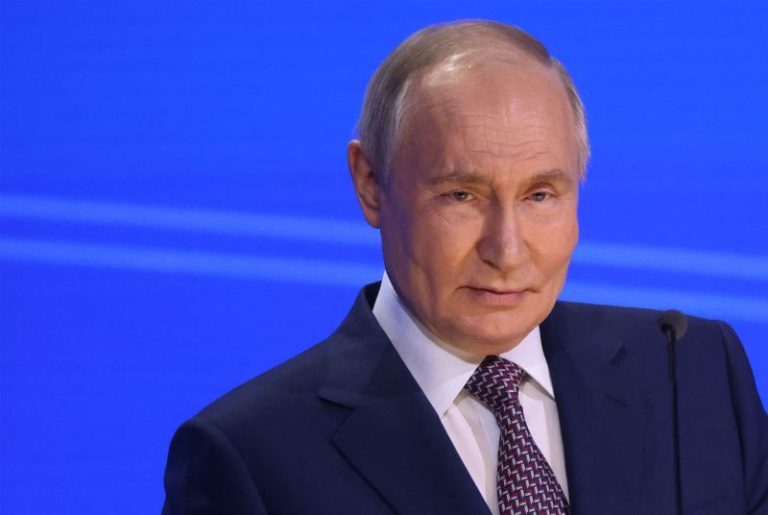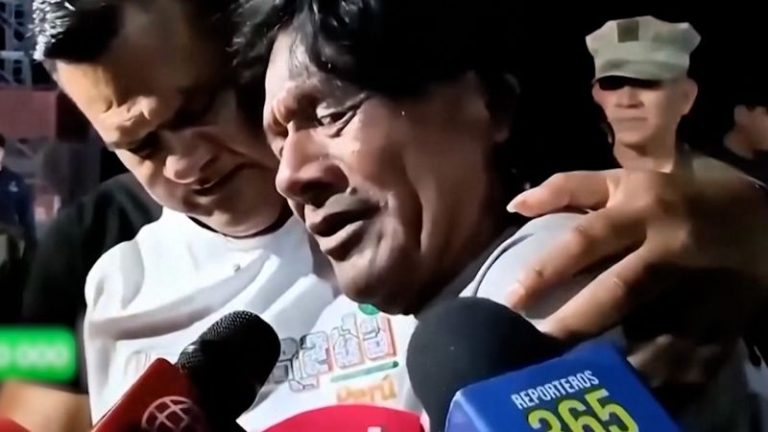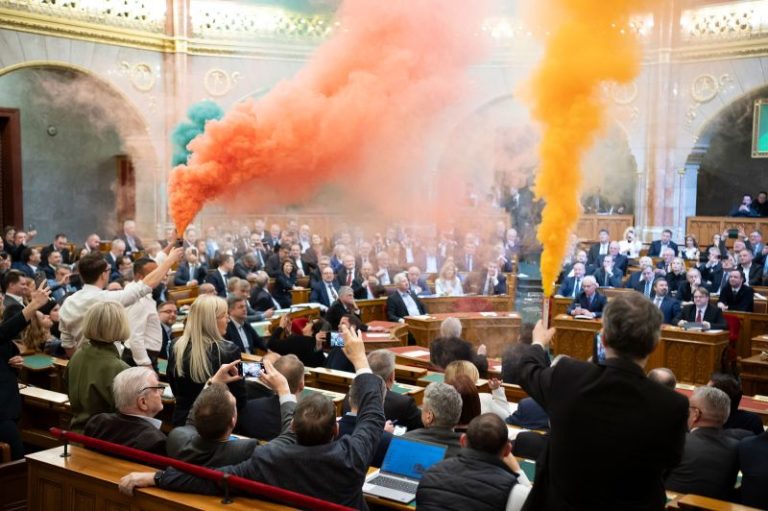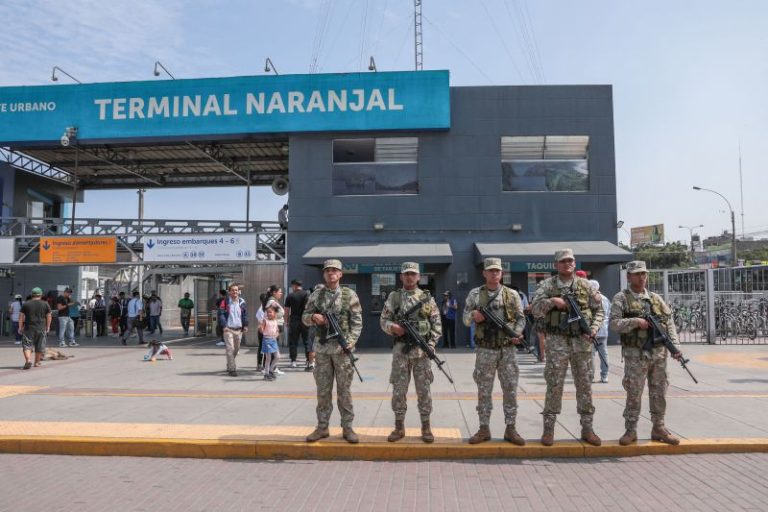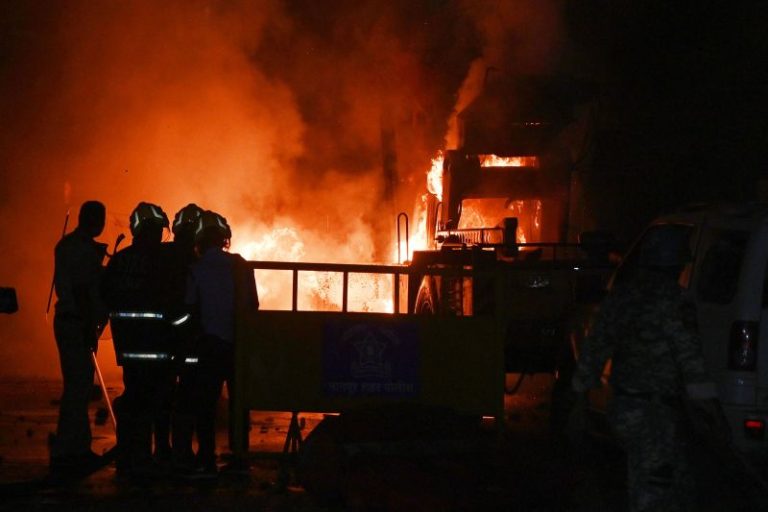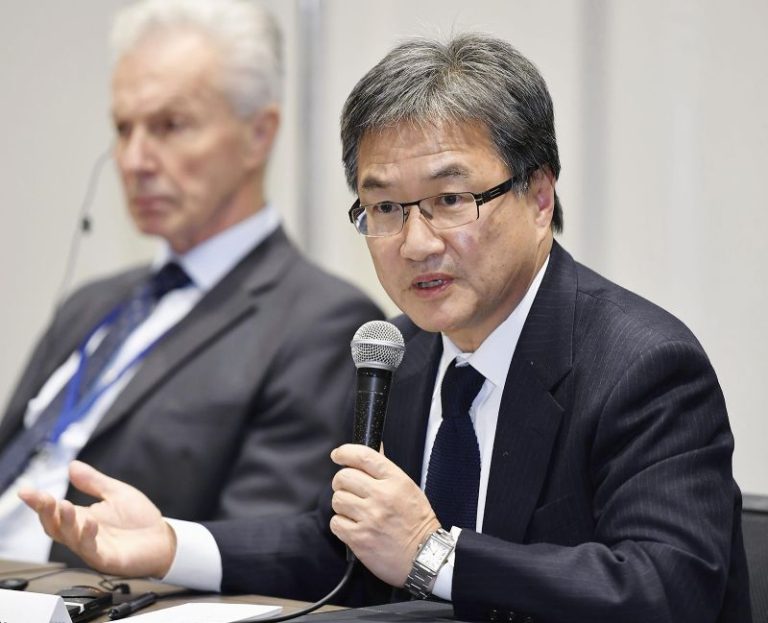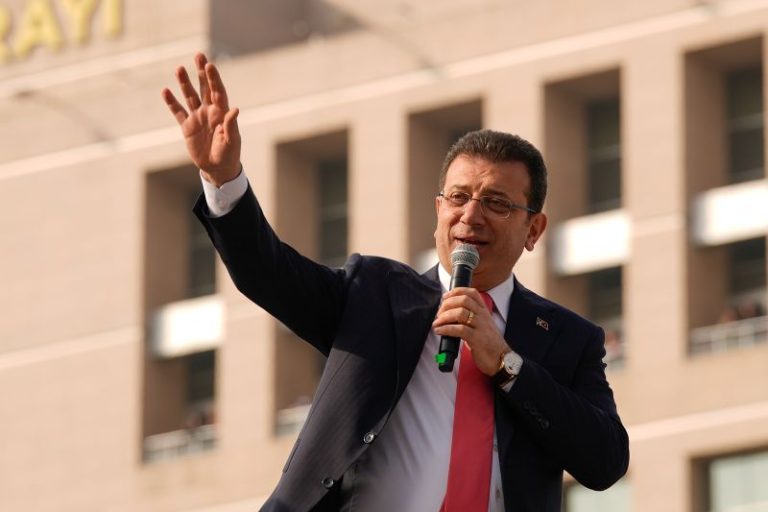Mimicking the motion of combing locks of hair with a brush, Sama Tubail stares at her reflection in a mirror and begins to cry.
For the eight-year-old, the movement brings back memories of a life before October 7, 2023 – when she had long hair and played outside with her friends in northern Gaza’s Jabalya. But since then, Sama and her family have been among the estimated 1.9 million Palestinians forcibly displaced from their homes, fleeing first to the enclave’s southern Rafah region under Israeli military orders. As the violence escalated, Sama moved to a displacement camp in central Gaza’s Khan Younis.
Israel launched a war in Gaza after Hamas-led militants attacked southern Israel on October 7, 2023, killing 1,200 people – mostly civilians, according to Israeli authorities, and kidnapping more than 250. Israel’s military offensive, paused for almost two months under a fragile ceasefire deal, has killed more than 48,000 Palestinians, mostly women and children, according to Gaza’s health ministry.
UNICEF, the United Nations’ children’s agency, estimated in a report last June that nearly all of Gaza’s 1.2 million children need psychological support, especially those exposed to repeated traumatic events.
A week after the ceasefire between Israel and Hamas was announced in January, the UN’s humanitarian chief, Tom Fletcher, told the UN Security Council that “a generation has been traumatized.”
“Children have been killed, starved and frozen to death,” Fletcher said, adding that “some died before their first breath – perishing with their mothers in childbirth.”
‘Why won’t my hair grow?’
Last year, doctors diagnosed that Sama’s hair loss was a result of “nervous shock,” specifically after her neighbor’s house in Rafah was hit by an Israeli airstrike in August. The traumatic upending of her daily life since October 7 also likely contributed to her alopecia, a condition that causes hair loss, they said.
A report late last year by the War Child Alliance and Gaza-based Community Training Centre for Crisis Management highlights the severe psychological toll on children of Israel’s onslaught in Gaza over the past year. The report, based on a survey of more than 500 caregivers of vulnerable children, found that 96% of children in those circumstances felt that death was imminent and nearly half – 49% – had expressed a “wish to die” because of Israel’s assault.
Sama’s mental anguish intensified after she was bullied by other children for her hair loss, leading her to retreat indoors. Outside, she wears a pink bandana to cover her scalp.
“I want to die and have my hair grow in Paradise; God willing.”
With the tenuous ceasefire in place, tens of thousands of displaced Palestinians started moving back home toward northern Gaza. Sama’s house was flattened in Israel’s bombardment and she and her family remained in Khan Younis, unable to afford travel costs to return home.
“Transportation costs are too high, and even if we go, there is no water, and we don’t know where we would stay,” she continued.
Mental health in Gaza
Providing mental health services in Gaza has always come with challenges. But Dr. Yasser Abu Jamei, director of the Gaza Community Mental Health Programme (GCMHP), explained that during Israel’s 15-month assault his staff had also suffered trauma which made it difficult to treat others.
“They still carry on and try to bring some hope and support to families (while) working in shelters.”
One technique he said the GCMHP employs is drawing therapy, which allows children to express their feelings through non-verbal communication. He recalled an instance in which giving a child the space to draw enabled them to talk to a GCMHP psychologist about their pain.
“(The child said) my friends are in heaven, but one of them, they found him without his head,” Abu Jamei said. “How could he go to heaven while his head is not there? (The child) continued to cry.”
While the fragile ceasefire held, Abu Jamei said the GCMHP was employing a mental health plan to treat patients which could last for up to six months. GCMHP workers were “relieved” by the pause in fighting, he added, but still felt a “heaviness of the work that awaits them.”
‘A drone came and killed them’
Seven-year-old Anas Abu Eish and his sister Doa, aged eight, live with their grandmother Om-Alabed in a displacement camp in the Al-Mawasi area of Khan Younis. The siblings suffered the loss of their parents in an Israeli strike.
Om-Alabed said the children had been deeply affected by what happened and that Anas experiences moments of aggression whenever he sees other children being embraced by their mothers.
“I frequently remind people to be understanding, as he has lost not only his parents but also the safety, security, warmth, and affection (they) provided,” she said.
“They are interacting. I’ve seen children, they just look at you and they don’t say anything. They don’t cry, they just look at the space (around them), I worry about (those) children more,” Foa said.
Though their home is close by in Rafah, Anas and Doa remained in Al-Mawasi even after the truce was agreed, unable to return as it was under a “red zone” designation – an area considered likely to be targeted if hostilities resumed.
Om-Alabed said after the ceasefire was announced, they did travel back and found their house in ruins. It felt too dangerous to stay there. “We couldn’t handle it,” she said. “We are here waiting and dreaming that our red zone becomes a green zone so we can go back and put our tents over the rubble.”
“All the buildings are crashed into each other,” Om-Alabed continued. “To walk from here to there, you have to climb rubble as if you are climbing a mountain, just to get to our area.”
‘There was sand in my mouth, I was screaming’
In the same displacement camp, six-year-old Manal Jouda calmly recalls the night her home was destroyed, killing her parents and trapping her under the rubble. She described the terror of waiting to be rescued.
“There was sand in my mouth, I was screaming, they dug with a shovel, our neighbor was saying ‘this is Manal, this is Manal.’ I was awake, my eyes were opened under the rubble, my mouth was opened, and sand was coming into it,” she said.
“This is the kind of child I would follow to see if there was a way of reducing the pain her brain will hold later on,” Foa said of Manal.
Even with a ceasefire, children need stability to help aid their healing, Foa said. But she believes that with the right treatment, Palestinian children can make a partial recovery.
“They will never be the same as before the war, but they will recover in the sense that they could be functional,” she said.
“They can be content most of the time, not be distressed, not being dysfunctional and go on with their life.”
But for children like Sama, stability remains out of reach.
‘My friends have hair, and I don’t’
Heavy rain and strong winds have battered displacement camps, destroying makeshift tents and leaving the young girl and other Palestinian families with little shelter.
Even with a truce in place, her hair didn’t grow back and she wonders if it ever will.
“Every time my hair starts to grow, I look at it with hope, but then it falls out again,” she said.
Her mother explained that Sama feels ashamed of having no hair, even in front of her sisters, and feels she can’t restart her life until it regrows.
“Sama always told me ‘I want to go to the north to find my clothes and my memories,’” Om-Mohammed said.
“But now she has changed her mind and says ‘where would we go? We don’t have a home anymore; all my friends have hair, and I don’t.’”


